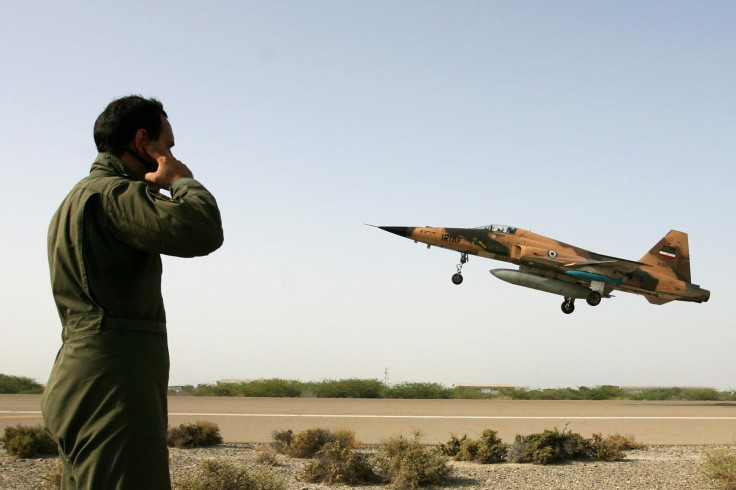Iran Unveils New Fighter Jet, Locally Built, Amid Renewed US Sanction

As a show of strengthening military force, Iran unveiled a new domestically built fighter jet Tuesday at a defense show in Tehran, which was attended by President Hassan Rouhani.
Although Iranian Defense Minister Amir Hatami had said the jet was scheduled to be unveiled on Wednesday — which is when the country celebrates its National Defense Day — when news about the aircraft was first announced on Saturday, the unveiling came a day early.
"We have learned in the (Iran-Iraq) war that we cannot rely on anyone but ourselves. Our resources are limited and we are committed to establishing security at a minimum cost," Hatami said in a televised interview, Mail Online reported.
He added that the decision to strengthen the country's air force was taken as a result of its eight-year-long war with Iraq in the 1980s, during which the nation had to suffer a number of missile attacks. It was also fueled by repeated threats from Israel and the United States, with the latter saying that "all options are on the table" when it came to Iran.
Iran amilla fighter jet eh ufadhdhaifi https://t.co/VF8tQ8LnT0
— Aafathis Online (@aafathismv) August 21, 2018
The "100-percent indigenously made" fourth-generation fighter jet came completely equipped with "advanced avionics" and multi-purpose radar, the state TV agency reported.
The jet, named “Kowsar,” is capable of carrying various weapons, and could be used for shorter aerial support missions. It reportedly proved successful in trial tests, Reuters reported.
Pictures from the event, where the jet was unveiled, showed it ready for its public flight as it rested on the runway. In one of the photos, Rouhani was seen sitting in the cockpit of the plane.
While revealing a handful of details regarding the jet Saturday, Hatami said Iran was not interested in any direct talks with the U.S. to resolve the worsening diplomatic relations between the two nations, especially after President Donald Trump withdrew the U.S. from a 2015 accord between Iran and world powers in May.
At the time, Trump claimed that the accord — which was supposed to curb Tehran’s nuclear activity in exchange for sanctions relief — had not successfully reined in Iran’s ballistic missile program or checked its support for proxies in conflicts in Syria, Iraq and Yemen.
"Our top priority has been development of our missile program. We are in a good position in this field, but we need to develop it," Hatami said. “We will present a plane on National Defense Industry Day, and people will see it fly, and the equipment designed for it.”
Iran had unveiled a domestically built fighter jet, called Qaher 313, in 2013. However, defense analysts expressed their doubts over the viability of the aircraft. Other than that, the country’s air force has mostly been limited to a few dozen either Russian or old U.S. fighter jets acquired before the 1979 Iranian revolution.
In the middle of rising conflicts with its regional rivals in the Middle East, Iran was barred from importing military-grade weapons due to international sanctions and embargoes, forcing it to develop an advanced domestic arms industry.
© Copyright IBTimes 2025. All rights reserved.






















